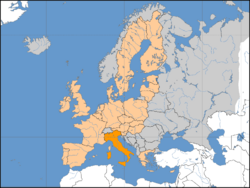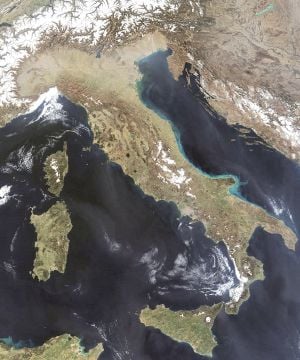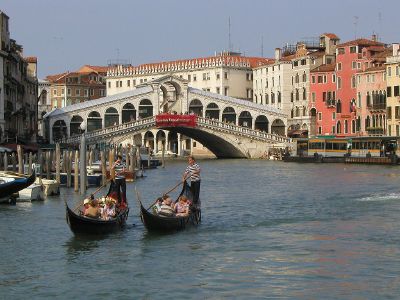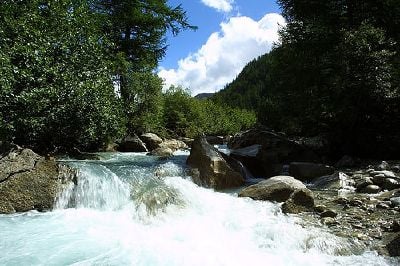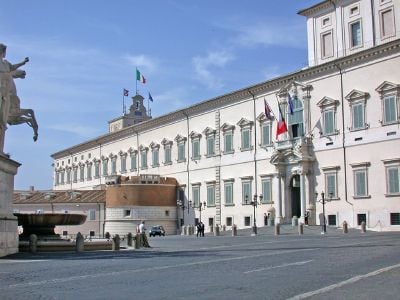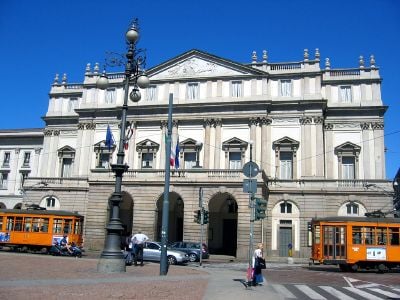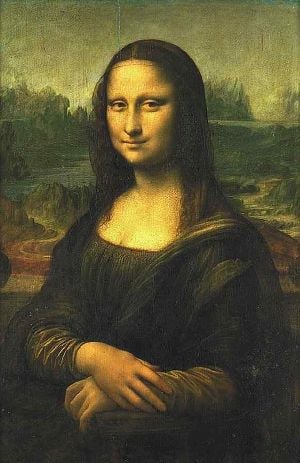Italy
| Repubblica Italiana Italian Republic |
||||||
|---|---|---|---|---|---|---|
|
||||||
| Anthem: Il Canto degli Italiani  The Song of the Italians |
||||||
| Capital (and largest city) | Rome 41¬į54‚Ä≤N 12¬į29‚Ä≤E | |||||
| Official languages | Italian1[1] | |||||
| Demonym | Italian | |||||
| Government | Unitary parliamentary republic | |||||
|  -  | President | Sergio Mattarella | ||||
|  -  | Prime Minister | Mario Draghi | ||||
| Legislature | Parliament | |||||
|  -  | Upper House | Senate of the Republic | ||||
|  -  | Lower House | Chamber of Deputies | ||||
| Formation | ||||||
|  -  | Unification | March 17, 1861  | ||||
|  -  | Republic | June 2, 1946  | ||||
| EU accession | March 25, 1957 (founding member) | |||||
| Area | ||||||
|  -  | Total | 301,338 km² (71st) 116,346 sq mi  |
||||
|  -  | Water (%) | 2.4 | ||||
| Population | ||||||
|  -  | 2021 estimate | 62,390,364 [2] (23rd) | ||||
|  -  | 2011 census | 59,433,744[3]  | ||||
|  -  | Density | 201.7/km² (63rd) 521.2/sq mi |
||||
| GDP (PPP) | 2021 estimate | |||||
|  -  | Total | |||||
|  -  | Per capita | |||||
| GDP (nominal) | 2021 estimate | |||||
|  -  | Total | |||||
|  -  | Per capita | |||||
| Gini (2019) | 32.8 [5]  | |||||
| Currency | Euro (‚ā¨)2 (EUR) |
|||||
| Time zone | CET (UTC+1) | |||||
|  -  | Summer (DST) | CEST (UTC+2) | ||||
| Internet TLD | .it3 | |||||
| Calling code | [[+394]] | |||||
| 1 | French is co-official in the Aosta Valley; Slovene is co-official in the province of Trieste and the province of Gorizia; German and Ladin are co-official in the province of South Tyrol. | |||||
| 2 | Before 2002, the Italian Lira. The euro is accepted in Campione d'Italia, but the official currency there is the Swiss Franc.[6] | |||||
| 3 | The .eu domain is also used, as it is shared with other European Union member states. | |||||
| 4 | To call Campione d'Italia, it is necessary to use the Swiss code +41. | |||||
Italy (Italia), officially the Italian Republic, is a Southern European country with a population of approximately 60 million. It comprises the Po River valley, the Italian Peninsula and the two largest islands in the Mediterranean Sea, Sicily and Sardinia. Called "il Belpaese" (beautiful country) by its inhabitants due to the variety of its landscapes and for having the world's largest artistic patrimony; Italy is home to the greatest number of UNESCO World Heritage Sites of any nation in the world.
The Italian Republic shares its northern alpine boundary with France, Switzerland, Austria and Slovenia. The country also shares a sea border with Croatia, Slovenia and France. The independent countries of San Marino and the Vatican City are enclaves within Italian territory. Also belonging to the republic is the commune of Campione d'Italia, an enclave in the territory of the Italian Switzerland. The Republic includes only the 92 percent of Italian physical region, delimited conventionally by the alpine watershed; besides the above-mentioned enclaves, the following territories do not belong to the country: the Principality of Monaco, Nice with Briga and Tenda, some strips of the Alps near the French border (Monginevro, Moncenisio and Piccolo San Bernardo), the Italian Switzerland (Canton Ticino and some valleys of Grigioni), the peninsula of Istria and a piece of Venezia Giulia, the island of Corsica and the archipelago of Malta.
Today, Italy is a highly developed country, a member of the G8 and a founding member of what is now the European Union, having signed the Treaty of Rome in 1957.
Italy was home to many well-known and influential European civilizations, including the Etruscans, Greeks and the Romans. For more than 3,000 years Italy experienced migrations and invasions from Germanic, Celtic, Frankish, Lombard, Byzantine Greek, Saracen, Norman, and Angevin peoples, and was divided into many independent states until 1861 when it became a nation-state.
Both the internal and external facets of Western Civilization were born on the Italian peninsula, whether one looks at the history of the Christian faith, philosophy, art, science or social customs and culture.
Geography
Italy consists predominantly of a large peninsula (the Italian Peninsula) with a distinctive boot shape that extends into the Mediterranean Sea, where together with its two main islands Sicily and Sardinia it creates distinct bodies of water, such as the Adriatic Sea to the north-east, the Ionian Sea to the south-east, the Tyrrhenian Sea to the south-west and finally the Ligurian Sea to the north-west.
The Apennine mountains form the backbone of this peninsula, leading north-west to where they join the Alps, the mountain range that then forms an arc enclosing Italy from the north. A large alluvial plain called the Po-Venetian plain is drained by the Po River‚ÄĒwhich is Italy's biggest river with 652 km‚ÄĒand its many tributaries flowing down from the Alps.
Major rivers include the Tiber (Tevere) (405 km), Adige (410 km), Arno (241 km), Piave (220 km), Reno (212 km), Volturno (175 km), Tagliamento (170 km), Liri-Garigliano (158 km), Isonzo (136 km).
Its highest point is Mont Blanc (Monte Bianco) at 4,810 metres (15,781 feet). Italy is more typically associated with two famous volcanoes: the currently dormant Vesuvius near Naples and the very active Etna on Sicily.
The city of Venice, often called "the city of water," stretches across numerous small islands in the marshy Venetian Lagoon along the Adriatic Sea in the northeast section of the country. The city is world-famous for its canals. It is built on an archipelago of 122 islands formed by about 150 canals in a shallow lagoon. The islands on which the city is built are connected by about 400 bridges. In the old center, the canals serve the function of roads, and every form of transport is on water or on foot. In the 19th century a causeway to the mainland brought a railway station to Venice, and an automobile causeway and parking lot was added in the 20th century. Beyond these land entrances at the northern edge of the city, transportation within the city remains, as it was in centuries past, entirely on water or on foot. Venice is Europe's largest urban carfree area, unique in Europe in remaining a sizable functioning city in the 21st century entirely without motorcars or trucks.
Climate
The Italian climate is unique in each region. The north of Italy (Turin, Milan, and Bologna) has a true continental climate, while below Florence it becomes more and more Mediterranean.
The climate of the coastal areas of the Peninsula is very different from that of the interior, particularly during the winter months. The higher areas are cold, wet, and often snowy. The coastal regions, where most of the large towns are located, have a typical Mediterranean climate with mild winters and hot and generally dry summers. The length and intensity of the summer dry season increases southwards (compare the tables for Rome, Naples, and Brindisi).
Italy is subject to highly diverse weather conditions in autumn, winter, and spring, while summer is usually more stable.
The least number of rainy days and the highest number of hours of sunshine occur in the extreme south of the mainland and in Sicily and Sardinia. Here sunshine averages from four to five hours a day in winter and up to ten or eleven hours in summer.
In the north the precipitation is quite well distributed during the year. Between November and March the Po valley is often covered by fog, above all the central zone (Pavia, Cremona, and Mantua). Snow is quite common between early December and mid-February in cities like Turin, Milan and Bologna.
History
The word Italy derives from the Homeric (Aeolic) word őĻŌĄőĪőĽŌĆŌā, which means bull. Excavations throughout Italy have found proof of people in Italy dating back to the Paleolithic period (the "Old Stone Age") some 200,000 years ago. The first Greek settlers, who arrived in Italy from Euboea island in the eighth century B.C.E., were possibly the first to use the reference land of bulls.
Italy has influenced the cultural and social development of the whole Mediterranean area, deeply influencing European culture as well. As a result it has also influenced other important cultures. Such cultures and civilizations have existed there since prehistoric times. After Magna Graecia, the Etruscan civilization and especially the Roman Republic and Empire that dominated this part of the world for many centuries, Italy was central to European science and art during the Renaissance.
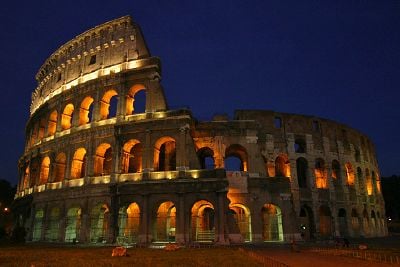
Serving as the center of the Roman civilization for centuries, Italy lost its unity after the collapse of the Roman Empire and subsequent barbaric invasions. Briefly reunited under Byzantium (552), Italy was occupied by the Longobards in 568, resulting in the peninsula becoming seriously divided. For centuries the country was the prey of different populations, resulting in its ultimate decline. Most of the population fled from cities to take refuge in the countryside under the protection of powerful feudal lords. After the Longobards came the Franks (774). Italy became part of the Holy Roman Empire, later to become the Holy Roman Germanic Empire. Pippin the Short created the first nucleus of the State of the Vatican, which later became a strong countervailing force against any unification of the country.
Population and economy started to pick up slowly after 1000, with the resurgence of cities, trade, arts and literature. During the later Middle Ages the fragmentation of the peninsula, especially in the northern and central parts of the country, continued, while the southern part, with Naples, Apulia and Sicily, remained a single dominion. Venice created a powerful commercial empire in the Eastern part of the Mediterranean Sea and Black Sea.
The Black Death (1348) inflicted a terrible blow to Italy, resulting in one third of the population being killed by the disease. The recovery from this disaster led to a new resurgence of cities, trade and economy which greatly stimulated the successive phase of Humanism and the Renaissance (XV-XVI) when Italy again returned as the center of Western civilization, exerting strong influence on the other European countries.
Domination by other countries
After a century where the fragmented system of Italian states and principalities were able to maintain a relative independence and a balance of power in the peninsula, the French king Charles VIII in 1494 opened the first of a series of invasions, that lasted half of the sixteenth century, and created a competition between France and Spain for the possession of the country. Ultimately Spain prevailed (the Treaty of Cateau-Cambresis in 1559 recognized the Spanish possession of the Kingdom of Naples) and for almost two centuries became the hegemon in Italy. The alliance between reactionary Catholic Spain and the Holy See resulted in the systematic persecution of any Protestant movement, with the result that Italy remained a Catholic country with marginal Protestant presence. The Spanish domination and the control of the Church resulted in intellectual stagnation and economic decadence, also attributable to the shifting of the main commercial routes from the Mediterranean to the Atlantic Ocean.
Austria succeeded Spain as hegemon in Italy after the Peace of Utrecht (1713), having acquired the State of Milan and the Kingdom of Naples. The Austrian domination, thanks also to the Illuminism embraced by Habsburg emperors, was a considerable improvement upon the Spanish one. The northern part of Italy, under the direct control of Vienna recovered its economic dynamism and intellectual fervor.
The French Revolution and the Napoleonic War (1796-1851) introduced the modern ideas of equality, democracy, law and nation. The peninsula was not a main battle field as in the past but Napoleon completely changed its political map by destroying the Republic of Venice in 1799, which never recovered its independence. The states founded by Napoleon, with the support of minority groups of Italian patriots, were short-lived and did not survive the defeat of the French Emperor in 1815.
The Restoration saw all the pre-Revolution states restored with the exception of the Republic of Venice (previously under Austrian control) and the Republic of Genoa (under Savoy domination). Napoleon rule give birth to the first national movement for unity and independence. Albeit formed by small groups with almost no contact with the masses, the Italian patriots and liberals staged several uprisings in the decades up to 1860. Giuseppe Mazzini and Giuseppe Garibaldi created the most economic reform for the impoverished masses. From 1848 onwards the Italian patriots were openly supported by Vittorio Emanuele II, the king of Sardinia, who put his arms in the Italian tricolor dedicating the House of Savoy to Italian unity.
Unification
The unification of Italy was declared on March 17, 1861, after a successful war (the Second War of Independence) against Austria with the support of France, and after Giuseppe Garibaldi organized an invasion of the Kingdom of Two Sicilies (Naples and Sicily) in 1860. Vittorio Emanuele II became the first king of the united Italy.
The national territory was enlarged to Veneto and Venice in 1866 after the third War of Independence, fought by allied Italy and Prussia against Austria. Rome itself remained for a little less than a decade under the Papacy thanks to French protection, and became part of the Kingdom of Italy on September 20, 1870, after Italian troops stormed the city.
The first unified state was plagued by a gruesome rebellion of the Southern populations opposed to the new domination, by economic stagnation, misery, illiteracy and a weak national consciousness. Italian was spoken by a small part of the population while the rest spoke local dialects.
In 1878 Umberto I succeeded his father Vittorio Emanuele II as King of Italy. He was killed by an anarchist in 1900 and succeeded by his son Vittorio Emanuele III.
Industrialization and modernization, at least in the northern part of the country, started in the last part of the nineteenth century under a protectionist regime. The south, meanwhile, stagnated under overpopulation and underdevelopment, forcing millions of people to search for employment and better conditions abroad. This lasted until 1970. It is calculated that more than 26 million Italians migrated to France, Germany, Switzerland, United States, Argentina, Brazil, and Australia.
Democracy
Democracy made its first appearance at the beginning of the twentieth century. The 1848 Constitution provided for basic freedoms but the electoral laws excluded the disposed and the uneducated from voting. It wasn't until 1913 that male universal suffrage was allowed. The Socialist Party became the main political party, replacing the traditional liberal and conservative organizations. The path to a modern liberal democracy was interrupted by the tragedy of the World War I (1914-1918), which Italy fought along with France and Great Britain. Italy was able to beat the Austrian-Hungarian Empire in November 1918. It obtained Trento and Trieste and a few territories on the Dalmatian coast. (Zara) was considered a great power, but the population had to pay a heavy price. The war produced more than 600,000 dead, inflation and unemployment, economic and political instability, which in the end allowed the fascist movement to reach power in 1922 with the tacit support of King Vittorio Emanuele III, who feared civil war and revolution.
Mussolini
The fascist dictatorship of Benito Mussolini lasted from 1922 to 1943 but in the first years Mussolini maintained the appearance of a liberal democracy. After rigged elections in 1924 gave Fascism and its conservative allies an absolute majority in the Parliament, Mussolini canceled all democratic liberties in January 1925. He then proceeded to establish a totalitarian state. Political parties were banned, independent trade unions were closed. The only permitted party was the National Fascist Party. A secret police (OVRA) and a system of quasi-legal repression (Tribunale Speciale) ensured the total control of the regime upon the Italians who, while in the majority, either resigned themselves to or welcomed the dictatorship, many considering it a last resort to stop the spread of communism. While relatively benign in comparison to Nazi Germany or Stalinist Russia, several thousand people were incarcerated or exiled for their opposition and many were killed by fascist thugs (Carlo Rosselli) or died in prison (Antonio Gramsci). Mussolini tried to spread his authoritarian ideology to other European countries and dictators such as Salazar in Portugal, General Francisco Franco in Spain and Hitler in Germany. Conservative, democratic leaders in Great Britain and United States were favorable to Mussolini in the early years of his governance.
In 1929 Mussolini formed a pact with the Holy See, resulting in the rebirth of an independent state of the Vatican for the Catholic Church in the heart of Rome. In 1935 he declared war on Ethiopian it was subjugated in few months. This resulted in the alienation of Italy from its traditional allies, France and Great Britain, and its nearing to Nazi Germany. A pact with Germany was concluded in 1936 and then another in 1938 (the Iron Pact). Italy supported Franco's revolution and Hitler's advances in central Europe, accepting the annexation of Austria to Germany in 1938, even though the disappearance of a buffer state between mighty Germany and Italy was unfavorable for the country. In October 1938 Mussolini managed to avoid the eruption of another war in Europe, bringing together Great Britain, France and Germany at Czechoslovakia's expense.
In April 1939 Italy occupied Albania, a de-facto protectorate for decades, but in September 1939, after the invasion of Poland, Mussolini decided not to intervene on Germany's side, due to the poor preparation of the Italian armed forces. Italy entered the war in June 1940 when France was almost defeated. Mussolini hoped for a quick victory but Italy suffered from the very beginning from the poor training of its army and the lack of experience of its generals. Italy invaded Greece in October 1940 via Albania but after a few days was forced to withdraw. After conquering British Somalia in 1940, a counter-attack by the Allies led to the loss of the whole Italian empire in the Horn of Africa. Italy was also defeated in Northern Africa and saved only by the German armed forces led by Rommel.
After several defeats, Italy was invaded in May 1943. In July 1943, King Vittorio Emanuele III staged a coup d'etat against Mussolini, having him arrested. In September 1943 Italy surrendered. It was immediately invaded by Germany and for nearly two years the country was divided and became a battlefield. The Nazi-occupied part of the country, where a puppet fascist state under Mussolini was reconstituted, was the theater for a savage civil war between freedom fighters ("partigiani") and Nazi and fascist troops. The country was liberated by a national uprising on April 25, 1945 (the Liberazione).
Republic
Agitation against the king ran high in the north where leftist and communist armed partisans wanted to depose him. Vittorio Emanuele gave up the throne to his son Umberto II who again faced the possibility of civil war. Italy became a Republic after a popular referendum held on June 2, 1946, a day now celebrated as Republic Day. The republic won with a 9 percent margin; the north of Italy voted prevalently for a republic, the south for the monarchy. The Republican Constitution was approved and went into effect on January 1, 1948. It included a provisional measure banning all male members of the house of Savoy from Italy. This stipulation was redressed in 2002.
Since then Italy has experienced a strong economic growth, particularly in the 1950s and 1960s, which lifted the country to the position of being one of the most industrialized nations in the world, albeit with perennial political instability. The Christian Democratic Party and its liberal and social democratic allies ruled Italy without interruption from 1948 until 1994, marginalizing the main opposition party, the Italian Communist Party, until the end of the cold war.
In 1992-1994 a series of scandals (nicknamed "Tangentopoli") and the ensuing Mani pulite investigation destroyed the post-war political system. New parties and coalitions emerged: on the right, Forza Italia of the media-mogul Silvio Berlusconi became the main successor of the Christian Democrat party. On the left the Democratici di Sinistra (Democrats of the Left) became the moderate successors of the Communist Party, while the most liberal and progressive Catholic politicians became a part of La Margherita (the Daisy). In 1994 Silvio Berlusconi's Forza Italia and its allies (National Alliance and the Northern League) won the elections but the government collapsed after only a few months because the Northern League split out. A technical government cabinet led by Lamberto Dini, supported by the left-wing parties and the Northern League, lasted until Romano Prodi's new center-left coalition won the 1996 general election. In 2001 the center-right took the government and Berlusconi was able to remain in power for five years. The 2006 elections returned Prodi with a slim majority.
Italy is a founding member of the European Community, European Union and NATO.
Government and Politics
The 1948 Constitution of Italy established a bicameral parliament (Parlamento), consisting of a Chamber of Deputies (Camera dei Deputati) and a Senate (Senato della Repubblica), a separate judiciary, and an executive branch composed of a Council of Ministers (cabinet) (Consiglio dei ministri), headed by the prime minister (Presidente del consiglio dei ministri).
The President of the Republic (Presidente della Repubblica) is elected for seven years by the parliament sitting jointly with a small number of regional delegates. The president nominates the prime minister, who proposes the other ministers (formally named by the president). The Council of Ministers must retain the support (fiducia) of both houses.
The houses of parliament are popularly and directly elected through a complex electoral system which combines proportional representation with a majority prize for the largest coalition (Chamber). The electoral system in the Senate is based upon regional representation. The Chamber of Deputies has 630 members, the Senate 315 elected senators; in addition, the Senate includes former presidents and other persons (no more than five) appointed senators for life by the President of the Republic according to special constitutional provisions. Both houses are elected for a maximum of five years. If the majority coalition no longer supports the government, the Prime Minister can be ousted with a vote of no confidence, at which point the President can either appoint a new Prime Minister capable of forming a government with the support of Parliament, or dissolve Parliament and call for new elections.
A peculiarity of the Italian Parliament is the representation given to Italians permanently living abroad (more than two million). Among the 630 Deputies and the 315 Senators there are respectively 12 and 6 elected in four distinct foreign constituencies. Those members of Parliament were elected for the first time in April 2006 and they enjoy the same rights as members elected in Italy. In addition, the Italian Senate also has a small number of senators for life, appointed by the President of the Italian Republic "for outstanding patriotic merits in the social, scientific, artistic or literary field." Former Presidents of the Republic are ex officio life senators.
Legislative bills may originate in either house and must be passed by a majority in both. The Italian judicial system is based on Roman law modified by the Napoleonic code and later statutes. A constitutional court, the Corte Costituzionale, passes on the constitutionality of laws, and is a post-World War II innovation.
All Italian citizens older than 18 can vote. However, to vote for the senate, the voter must be at least 25 or older.
Administrative divisions
Italy is subdivided into 20 regions (regioni, singular regione). Five of these regions enjoy a special autonomous status that enables them to enact legislation on some of their specific local matters, and are marked by an *:
- Abruzzo (with capital L'Aquila)
- Basilicata (Potenza)
- Calabria (Catanzaro)
- Campania (Naples, Napoli)
- Emilia-Romagna (Bologna)
- Friuli-Venezia Giulia (Trieste)
- Latium, Lazio (Rome, Roma)
- Liguria (Genoa, Genova)
- Lombardy, Lombardia (Milan, Milano)
- Marches, Marche (Ancona)
- Molise (Campobasso)
- Piedmont, Piemonte (Turin, Torino)
- Apulia, Puglia (Bari)
- Sardinia, Sardegna (Cagliari)
- Aosta Valley, Valle d'Aosta / Vallée d'Aoste (Aosta, Aoste)
- Tuscany, Toscana (Florence, Firenze)
- Trentino-South Tyrol, Trentino-Alto Adige / Trentino-S√ľdtirol (Trento, Bolzano-Bozen)
- Umbria (Perugia)
- Sicily, Sicilia (Palermo)
- Veneto (Venice, Venezia)
All regions except the Aosta Valley are further subdivided into two or more provinces.
Economy
Italy's capitalistic economy remains divided into a developed industrial north, dominated by private companies, and a less developed agricultural south. Italy's economy has deceptive strength because it is supported by a substantial ‚Äúunderground‚ÄĚ economy that functions outside government controls. Most new materials needed by industry and the majority of energy requirements are imported.
Italy joined the Euro from its conception in 1999. Italy's economic performance has at times lagged behind that of its EU partners, and the current government has enacted numerous short-term reforms aimed at improving competitiveness and long-term growth. It has moved slowly, however, on implementing certain structural reforms favored by economists, such as lightening the high tax burden and overhauling Italy's rigid labor market and expensive pension system, because of the current economic slowdown and opposition from labor unions.
Italy has been less successful in terms of developing world class multinational corporations. Instead, the country's main economic strength has been its large base of small and medium size companies. These companies typically manufacture products that are moderately advanced technologically and therefore increasingly face crushing competition from China and other emerging Asian economies. Meanwhile, a base of corporations able to compete in markets for advanced goods and services is underdeveloped or lacking entirely. It is not obvious how Italy will overcome this significant structural weakness in the short run, and Italy has therefore been referred to as the new "sick man of Europe."[7]
Science and technology
The contributions of revered Italian visionaries such as Galileo Galilei and Leonardo da Vinci made considerable advancements toward the scientific revolution. Other notable Italian scientists and inventors include Fermi, Cassini, Volta, Lagrange, Fibonacci, Marconi, and Meucci.
The Italians love of automobiles and speed has made Italy famous for its production of many of the world's most famous sports cars and the industry that flourishes there. Some of the world's most elite vehicles were developed in Italy: Lamborghini, Ferrari, Alfa Romeo, and Masarati are but a few of the well-known luxury cars that originated in Italy.
Demographics
Italy's population density is higher than that of most Western European countries. However, the distribution of the population is widely uneven. The most densely populated areas are the Po Valley (that accounts for almost a half of the national population) and the metropolitan areas of Rome and Naples, while vast regions such as the Alps and Apennines highlands, the plateaus of Basilicata and the island of Sardinia are very sparsely populated.
The population of Italy almost doubled during the twentieth century, but the pattern of growth was extremely uneven because of large-scale internal migration from the rural South to the industrial cities of the North, a phenomenon which happened as a consequence of the Italian economic miracle of the 1950‚Äď1960s. High fertility and birth rates persisted until the 1970s, after which they started to decline, and the population rapidly aged.
From the late nineteenth century until the 1960s Italy was a country of mass emigration. Between 1898 and 1914, the peak years of Italian diaspora, approximately 750,000 Italians emigrated each year.[8]
Starting from the early 1980s, until then a linguistically and culturally homogeneous society, Italy begun to attract substantial flows of foreign immigrants.[9] After the fall of the Berlin Wall and, more recently, the enlargements of the European Union, large waves of migration originated from the former socialist countries of Eastern Europe (especially Romania, Albania, Ukraine and Poland). An equally important source of immigration is neighboring North Africa (in particular, Morocco, Egypt and Tunisia), with soaring arrivals as a consequence of the Arab Spring.
The distribution of immigrants is largely uneven in Italy: 87 percent of immigrants live in the northern and central parts of the country (the most economically developed areas), while only 13 percent live in the southern half of the peninsula.
Religion
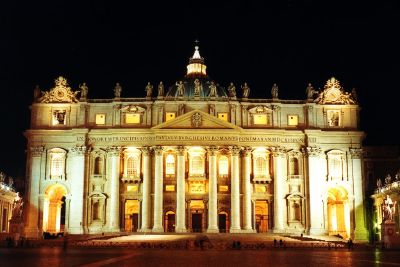
Roman Catholicism is by far the largest religion in the country. Although the Roman Catholic Church has been separated from the state, it still plays a role in the nation's political affairs partly due to Holy See's location in Vatican City, within Rome itself. Some 80 percent of Italians are Christian, with the vast majority being Roman Catholic and very small groups of Jehovah's Witnesses and Protestants)[2] Other Christian groups in Italy include Jehovah's Witnesses
Italy has received several waves of immigrants and as a result there are some 800,000 to 1 million Muslims.[2]
Languages
The official language of Italy is Standard Italian, descendant of Tuscan dialect and a direct descendant of Latin. (Some 75 percent of Italian words are of Latin origin.) However, when Italy was unified, in 1861, Italian existed mainly as a literary language, and was spoken by less than three percent of the population. Different languages were spoken throughout the Italian peninsula, many of which were Romance languages which had developed in every region, due to political fragmentation of Italy. Each historical region of Italy had its own so-called ‚Äėdialetto‚Äô (with ‚Äėdialect‚Äô usually meaning, improperly, a non-Italian Romance language), with variants existing at the township-level.
Massimo d'Azeglio, one of Cavour's ministers, is said to have stated, following Italian unification, that having created Italy, all that remained was to create Italians. Given the high number of languages spoken throughout the peninsula, it was quickly established that 'proper' or 'standard' Italian would be based on the Florentine dialect spoken in most of Tuscany (given that it was the first region to produce authors such as Dante Alighieri, who between 1308 and 1321 wrote the Divina Commedia). A national education system was established - leading to a decrease in variation in the languages spoken throughout the country over time. But it was not until the 1960s, when economic growth enabled widespread access to the television programs of the state television broadcaster, RAI, that Italian truly became broadly-known and quite standardized.
Today, despite regional variations in the form of accents and vowel emphasis, Italian is fully comprehensible to most throughout the country. Nevertheless certain dialects have become cherished beacons of regional variation‚ÄĒthe Neopolitan dialect which is extensively used for the singing of popular folk-songs, for instance, and in recent years many people have developed a particular pride in their dialects.
In addition to the various regional variations and dialects of standard Italian, a number of separate languages are spoken.
Culture
Italy, as a state, did not exist until the unification of the country came to a conclusion in 1861. Due to this comparatively late unification, and the historical autonomy of the many regions that comprise the Italian Peninsula, many traditions and customs that we now recognize as distinctly Italian can be identified by their regions of origin, which further reflect the influence of the many different peoples that occupied those areas, and of the importance of religion, especially Roman Catholicism. Despite the pronounced political and social isolation of these regions that prevailed throughout Italy's history, Italy's contributions to the cultural and historical heritage of Europe and western civilization at large, remain immense.
Architecture
Architectural ruins from antiquity throughout Italy testify to the greatness of cultures past. Italy's great treasures are seen by visitors from all over the world today. The history of architecture in Italy is one that begins with the ancient styles of the Etruscans and Greeks, progressing to classical Roman, then to the revival of the classical Roman era during the Renaissance and evolving into the Baroque era. During the period of the Italian Renaissance it had been customary for students of architecture to travel to Rome to study the ancient ruins and buildings as an essential part of their education. Three of the greatest architects of the Renaissance period are Brunelleschi, Alberti, and Palladia.
Today the unmistakable contributions of the ancient and classical architecture forms from this region of the world are everywhere evident in public buildings throughout the world. Classic Greco-Roman columns and domes have been used in the building of capitols and government buildings worldwide.
Art
Italy has been a seminal place for many important artistic and intellectual movements that spread throughout Europe and beyond, including the Renaissance and Baroque. Perhaps Italy's greatest cultural achievements lie in its long artistic heritage, which is validated by the names of Michelangelo, Leonardo da Vinci, Donatello, Botticelli, Fra Angelico, Tintoretto, Caravaggio, Bernini, Titian, and Raphael, among many others.
The history and development of art in western culture is grounded in hundreds of years of Italian history. Florence, Venice, and Rome, in particular, are brimming with art treasures in museums, churches, and public buildings.
Cuisine
Italian cuisine is also popular worldwide. From delicious tiramisu ice creams to pasta, pastries, and wines, there are numerous regional specialties which run the full gamut of culinary experience. Italian cuisine has become universally loved; from the simple spaghetti dish or casual pizza to the sophisticated anti-pasta, and several course gourmet experiences. Italy produces legendary fine wines and it is customary to call on the expertise of the local restauranteur to pair a particular wine with the food being served the customer.
Fashion
Italy is one of the world centers of modern high fashion clothing and accessory design. Fashion houses such as Armani, Benetton, Fendi, Gucci, Versace, and Prada have become household words. Many of Italy's top fashion designers have boutiques that can be found around the world. The popularity and influence of Italian-style fashion design also reaches into the area of interior design and furniture making.
Literature
Beginning with the eminent Florentine poet, Dante Alighieri, whose greatest work, the Divina Commedia is often considered the foremost literary statement produced in Europe during the Middle Ages, there is no shortage of celebrated literary figures. The writers and poets Boccaccio, Giacomo Leopardi, Alessandro Manzoni, Tasso, Ludovico Ariosto, and Petrarca, are best known for their sonnets. Prominent philosophers include Bruno, Ficino, Machiavelli, and Vico. Modern literary figures and Nobel laureates are nationalist poet Giosuè Carducci in 1906, realist writer Grazia Deledda in 1926, modern theater author Luigi Pirandello in 1936, poets Salvatore Quasimodo in 1959 and Eugenio Montale in 1975, and satirist and theater author Dario Fo in 1997.
Music
From folk to classical, music has always played an important role in Italian culture. Having given birth to opera, for example, Italy provides many of the very foundations of the classical music tradition. Some of the instruments that are often associated with classical music, including the piano and violin, were invented in Italy, and many of the existing classical music forms can trace their roots back to innovations of sixteenth and seventeenth century Italian music (such as the symphony, concerto, and sonata). Some of Italy's most famous composers include the Renaissance composers Palestrina and Monteverdi, the Baroque composers Corelli and Vivaldi, the Classical composers Paganini and Rossini, and the Romantic composers Verdi and Puccini. Modern Italian composers such as Berio and Nono proved significant in the development of experimental and electronic music.
Sports
Football (calcio) is a popular spectator and participation sport. The Italian national team has won the World Cup four times (1934, 1938, 1982 and 2006). Major Italian clubs frequently compete at a high level of European competitions. Rugby union is very popular in Italy; clubs compete domestically in the Super 10, as well as the European Heineken Cup tournament. The national team competes in the Six Nations Championship, and is a regular at the Rugby World Cup. Basketball (pallacanestro) is a sport gaining rapid popularity in Italy, although national teams have existed since the 1950s. The nation's top pro league, Lega, is widely regarded as the third best national league in the world after the American NBA and Spain's ACB. In some cities, (see Bologna, Siena, Pesaro or Varese) basketball is the most popular sport. Cycling is also a well represented sport in Italy. Italians are second only to Belgium in winning the most World Cycling Championships. The Giro d'Italia is a world famous long distance bicycle race held every May and constitutes one of the three Grand Tours along with the Tour de France and the Vuelta a Espa√Īa, each of which last approximately three weeks. Auto racing receives much attention in Italy, while the nation is host to a number of notable automobile racing events, such as the famed Italian Grand Prix. The Italian flair for design is legendary, and Ferrari has won more Formula Ones than any other manufacturer.
Notes
- ‚ÜĎ Languages of Italy Ethnologue. Retrieved September 22, 2021.
- ‚ÜĎ 2.0 2.1 2.2 CIA, Italy World Factbook. Retrieved September 22, 2021.
- ‚ÜĎ Census 2011 - final results National Institute of Statistics (Italy). Retrieved September 22, 2021.
- ‚ÜĎ 4.0 4.1 4.2 4.3 World Economic Outlook Database, October 2020 International Monetary Fund. Retrieved September 22, 2021.
- ‚ÜĎ Gini coefficient of equivalised disposable income - EU-SILC survey Eurostat. Retrieved Septmeber 22, 2021.
- ‚ÜĎ Comune di Campione d'Italia Comune.campione-d-italia.co.it Retrieved September 22, 2021.
- ‚ÜĎ Peter Gumbel, Twilight In Italy TIME, November 27, 2005. Retrieved September 22, 2021.
- ‚ÜĎ Linda Magnusson, Causes of the Italian mass emigration Thinkquest, 1999. Retrieved September 22, 2021.
- ‚ÜĎ Beverley Allen, Revisioning Italy: National Identity and Global Culture (University of Minnesota Press, 1997, ISBN 978-0816627271).
ReferencesISBN links support NWE through referral fees
- Allen, Beverley. Revisioning Italy: National Identity and Global Culture. University of Minnesota Press, 1997. ISBN 978-0816627271
- Bonechi, Monica, and Giovannella Masini.Rome and the Vatican: complete guide for visiting the city. Gold guides. Florence, Italy: Bonechi, 2001. ISBN 8847601363
- Coppa, Frank J., and William Roberts. Modern Italian History: An Annotated Bibliography. (Bibliographies and indexes in world history, no. 18) New York, NY: Greenwood Press, 1990. ISBN 0313248125
- Euvino, Gabrielle. The Complete Idiot's Guide to Italian History and Culture. Indianapolis, IN: Alpha, 2002. ISBN 0028642341
- Holmes, George. The Oxford History of Italy. Oxford: Oxford University Press, 1997. ISBN 0198205279
- Os, H. W. van. Dreaming of Italy. The Hague: Royal Picture Gallery Mauritshuis, 2006. ISBN 9040082227
- Welch, Evelyn S. Art and Society in Italy, 1350-1500. (Oxford history of art.) Oxford: Oxford University Press, 1997. ISBN 0192842455
External links
All links retrieved September 22, 2021.
- Italy CIA World Factbook
- Italy Magazine
- Life in Italy
- Italian History Index
- Italian Government Tourist Board
Credits
New World Encyclopedia writers and editors rewrote and completed the Wikipedia article in accordance with New World Encyclopedia standards. This article abides by terms of the Creative Commons CC-by-sa 3.0 License (CC-by-sa), which may be used and disseminated with proper attribution. Credit is due under the terms of this license that can reference both the New World Encyclopedia contributors and the selfless volunteer contributors of the Wikimedia Foundation. To cite this article click here for a list of acceptable citing formats.The history of earlier contributions by wikipedians is accessible to researchers here:
The history of this article since it was imported to New World Encyclopedia:
Note: Some restrictions may apply to use of individual images which are separately licensed.


